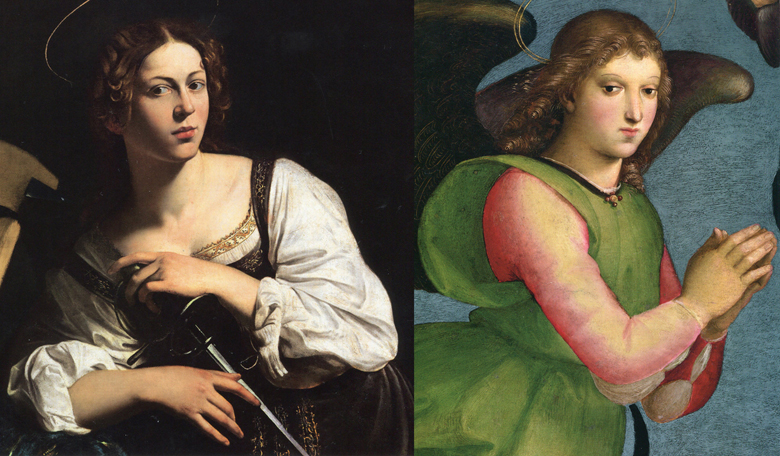
CLXVI
WAVES OF EMOTION FROM COAST TO COAST headlines the Times the evening of November 9, 2011.
From sea to shining sea.
“News Outlets Wonder Where They Stumbled” [NYT, 11/10/16, A1:5]
What do you say about a country that celebrated its post-war prosperity – when a man could make $25,000 a year on a GM assembly line – by killing three million Vietnamese?
What do you say about a country that has celebrated the decline of its hegemony by bombing Iraq for twenty-six years?
What do you say about a country that found it impossible to ratify an Equal Rights Amendment for women?
On Writing
On what ground does the narrator meet us?
What is her disposition?
What are the qualities of his feelings and thought?
What does she share?
What does he reserve?
Where is the freedom? The sense of structure and pattern?
Do we feel a sense of play?
How taut is the elastic between reader and “subject”?
At any given step. At any given shift.
What, in short, are the writer and reader building together?
And how do they apportion the labor and materials?
If I add it all up, or divide it all up, what agency do I deny my subject? My reader? Myself?
If I ask my readers to add, multiply or divide what I am either unwilling or unable to address in language, where and how does our disengagement from language, from subject, from common thread, manifest itself?
How do I manage firmness and gentleness, inhalation and exhalation of the narrative breath?
Where does his course run shallow and wide so as to irrigate the fields?
Where does her flow rush like a mill race?
Where does the stream vanish? Where does it resurge?
What is hidden by the mist?
Given harvest, how fine to grind the grain? How heavy the stone?
How wide the sieve?
How to draw upon the five flavors, the five colors, the five sounds and senses.
How to tell a peach tree from a plum tree.
How to weave a shawl. A basket. A fish trap.
How to observe the continuities and ruptures.
How to fit ten thousand things into a nutshell and distill them to an essence.
How does she travel a thousand li in one leap of her seven league thoughts?
How does he spend a day painting one chrysanthemum?
And throw it away.
No fault in the ink. No defect in the brush.
How does a subtle tension make my landscape a living thing?
Horse one. Horse two. Both of a species and distinct.
How does she draw from her energy without exhausting it?
Who does he meet coming toward him on the path?
How does the narrative align itself with things?
Dead man texting
And so moved was he by their plight that he devoted the remainder of his days and a considerable portion of his fortune to the relief of Pigs in Beggary…
Every day, I try to boost my intake of anti-occidents
When we are dead, is there a happier world?
Knowledge is hidden from us in clouds and darkness.
Since we can know no other kind of life,
Since the world of the dead is a mystery,
It seems we must blindly love, for what it is worth,
Our little gleam of light,
And follow our foolish course content with tales.
[Euripides, Hippolytus. Philip Vellacott, trans.]
The more I do, the more I find I haven’t done enough
Times headline: “Traveling While Muslim Complicates Air Travel.”
Gray Lady notwithstanding, when it comes to parsing its language, the paper of record seems more like “that damned elusive Pimpernel!”
FAQ: How do I turn “Muslim” off while I’m traveling?
Simply go to “preferences.” Under “preferences,” find the “culture and religion” submenu and toggle the “Muslim” switch off. Unfortunately, putting yourself in “airplane mode” usually isn’t sufficient on later models.
Thanks! : )
FAQ: I’m tired of “Judeo-Christian.” How do I change my default setting?
First you’ll need to shut down and do a “hard restart…”
We want no (stinkin’) reality czech
I sing of claws and the bear…
Four days after 11/9: through the window of Le G., you glimpse the sad clown faces – tragic masks – of the mourning chorus as it paces – strophe and antistrophe – led by their little dogs, downstage and back upon the streets of Chelsea.
All is lost! the masks wail. When the gods betray us, what can we poor mortals do!
Mask, literally, “face.”
For the first time [during the later Southern Song] the expressiveness of a picture seems to derive from concealment. Yet those paintings reverberate with life; their seemingly fragmentary character does not impair their fullness. Those hazy, hushed vistas contain the world whole. The sweet and harmless character of the early Southern Sung landscapes is here replaced [?] by an almost trenchant harmony that holds both life and death. Serenity seems here like a state of the inexorable, a transient state…
Around the middle of the thirteenth century the final stage of representation in landscape was near. Still advancing on a course almost predetermined by the past, the painters now made entire pictorial complexes of their basic element of design. For instance, “rocky-promontory-with-overhanging-trees” or “fishing-village-among-trees-in-mist-at-nightfall” are now treated as units, and the significance of the unit may become clear only through the context – which may be nothing but a sea of mist.
Or, a whole mountain may be reduced to one puddle of modulated ink, not as a blurred background motif but as the main theme. The line virtually disappears. Motifs dear to the painters of 1200, the sharply cut rocks and crooked pines, disappear. Such forms were too distinct and in any event too minutely detailed; the trees now must be leafy, tractable as wet broad masses. No element can be isolated in such paintings; every form is related to the next and to the whole by the haze and mists which often take up the largest parts of a picture. Space as such, the invisible, has now become the dominant theme, while the visible is reduced to the most summary suggestions…
The style of these masters – who were more or less closely related to Ch’an Buddhism – also affects the expression, which becomes severe. The loss of concrete visual matter means the loss of all beauty tied to discrete things… [Max Loehr, “Chinese Painting,” Catalogue of the Exhibition of Chinese Calligraphy and Painting in the Collection of John. M. Crawford, Jr. New York: The Pierpont Morgan Library, 1962. p. 41. Some paragraph breaks added by E.D.]
What does Law signify but a breakdown of communication, a division of the common?
And Apelles, the finest line separating this from that
Whereupon the motto of the Art Students League: Nulla dies sin linea, no day without a line…
Mind the gap. Keep calm, but queue up…
Real estate: what a development
And Alberti’s converging lines, when translated into Anglo-Saxon, demarcate the sanctity of property
Something there is that does not love a law
Once you load a metaphor, it can go off literally, and almost certainly will
We woke up to the question of how long we could expect to preserve even a shred of our autonomy
There is a relational world and a causal world.
Are they, in fact, distinct?
They all laughed when Tennyson recorded sound
Sombra side up
World Crêpe Center:
Will that be salée ou sucrée?
Democracy of the brush
“Breathing is massively practical,” says Belisa Vranich, author of the book “Breathe,” to be published in December…” [NYT, 11/15/16, D4:3]
I’m stepping out my dear
To breathe an atmosphere
That simply reeks (of class)
And I trust
That you’ll excuse my dust
When I step on the gas…
…Just then one of the two [Orestes] started up from the rock he sat on, and stood and jerked his head up and down and groaned aloud, raving md, with his hands trembling; and he hallooed like a huntsman, ‘Pylades, do you see her? And look, another foul fiend from hell! Can’t you see her? All fanged with adders coming at me to kill me! And the third! with blood-red fire flaming from her skirts, fanned with the beat of her wings! In her arms she holds a mountain of stone to crush me – it is my mother’s corpse! She is killing me! Where can I escape?’
Of course there were no such sights to be seen; but the cattle were bellowing and the dogs barking, and he mistook this for the shrieks and cries the Furies are supposed to give. We sat silent, crouching in fear of death; when suddenly he drew his sword and leaped like a lion right among our cattle, lunging out and stabbing them in the flank and rib, imagining that he was fighting off the Furies – til the very sea flowered with bloody foam. [The Herdsman, describing Orestes’ madness in Euripides, Iphigenia at Taurus, Philip Vellacott, trans. Penguin Books, Ltd.: Harmondsworth, Middlesex, England, 1968, p. 42, with slight modifications by E.D.]
As for Artemis, I find her guilty of hypocrisy! Her purity! Any man who has touched blood or a woman in labor or a corpse, Artemis calls unclean and bars him from her altars; yet she herself delights in these murderous sacrifices! No, no, it is impossible! Could ever Zeus beget and Leto bring forth such vile folly? It is no more true than the tale of Tantalus feasting the gods and regaling them with the flesh of a child – these things I do not believe. I believe that the men of this country, being murderers, impute their own savagery to divine authority. I do not believe that any god is evil! [Iphigenia, priestess of Artemis, ibid. pp. 84-85]
It’s iffy with Iphigenia…
The beauty of Chinese calligraphy is often described by the phrase “rhythmic vitality,” which is perhaps as good as any short expression. According to Chinese convention, life must be found in each character and even in each stroke, which should not be a pai-pi, literally, “defeating stroke,” in other words, a dead stroke. “A dot should resemble rock falling from a high cliff. A horizontal stroke should resemble a formation of cloud stretching a thousand miles. A vertical stroke should resemble a dried vine stem a myriad years old…” [Lien-Shen Yang, “Chinese Calligraphy,” Catalogue of the Exhibition of Chinese Calligraphy and Painting in the Collection of John. M. Crawford, Jr. New York: The Pierpont Morgan Library, 1962. p. 52. The source of the quotation is the calligraphy treatise of Ou-yuang Hsün]
Massively practical

